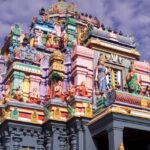Situated amidst the Himalayas, Himachal Pradesh is a land of great beauty with immense spirituality. Of the numerous holy places here, the Shiv temples in Himachal Pradesh show bright beacons of devotion and architectural marvel. All these temples are dedicated to Lord Shiva and depict how spiritual solace and historical intrigue bind together. From the ancient Baijnath Temple, perched in the lap of mighty Himalayas, to the beautiful Hidimba Temple, all echo faith, mythology, and a stronger-than-ever legacy of Shaivism toward this hill state.
Top 7 Shiv Temples In Himachal Pradesh
Here are the top 7 Shiv temples in Himachal Pradesh:
1. Baijnath Temple
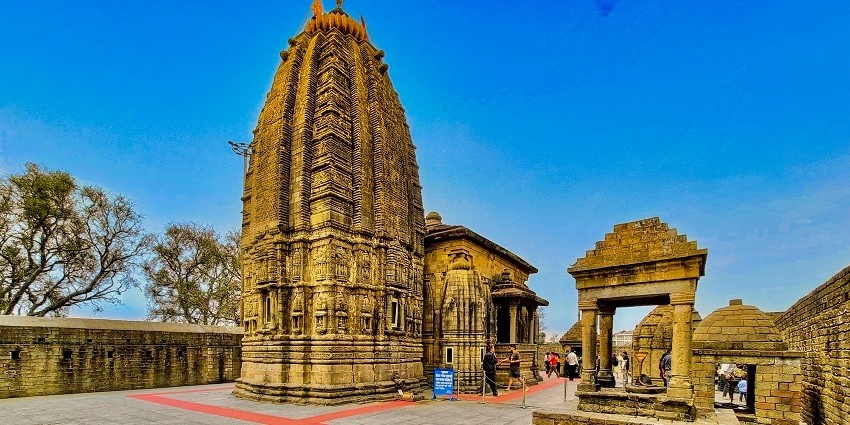
Photo: Ms Sarah Welch / Wikimedia Commons
The Baijnath Temple, located in the Kangra district, is one of the most revered Shiv temples in Himachal Pradesh. Dating back to the early 13th century, this ancient temple is dedicated to Shiva as Vaidyanath, the Lord of Physicians. The temple’s Nagara-style architecture features intricate stone carvings and a shikhara that exemplifies North Indian temple architecture. The sanctum houses a lingam, believed to be one of the 12 Jyotirlingas mentioned in Hindu scriptures.
Major Attractions: Ancient Nagara-style architecture and sacred Shiva lingam
Best Time To Visit: March to June and September to November
Ideal Trip Duration: 2 – 3 hours
Nearest Airport: Kangra Airport
Nearest Railway Station: Baijnath Paprola Railway Station
Suggested Read: Famous Temples In Mandi For A Blissful Experience
2. Manimahesh Temple
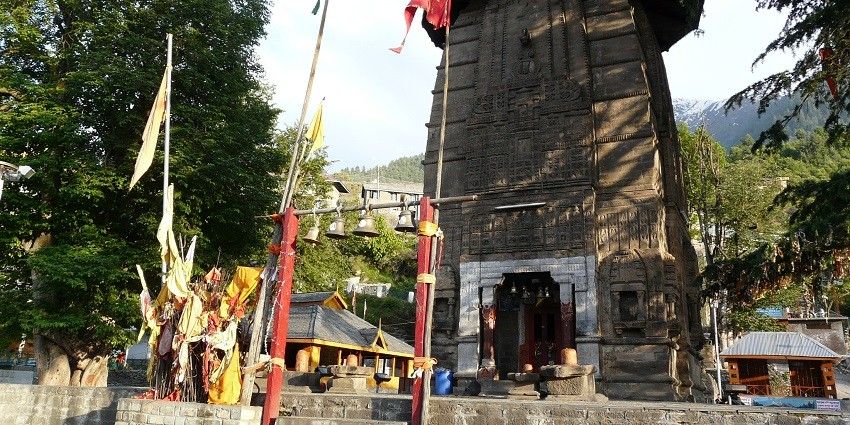
Photo: Varun Shiv Kapur / Wikimedia Commons
The Manimahesh Temple, situated at the base of Mount Kailash in the Chamba district, is a significant pilgrimage site for Shiva devotees. Overlooking the sacred Manimahesh Lake, believed to be Lord Shiva’s abode, the temple offers a spiritually charged atmosphere. While the temple structure is relatively simple, its natural setting is breathtakingly beautiful, with snow-capped Mount Kailash as a backdrop. The annual Manimahesh Yatra draws thousands of pilgrims to this remote location. The challenging trek to reach the temple adds an element of adventure to the spiritual journey.
Major Attractions: Spectacular natural setting and annual pilgrimage
Best Time To Visit: August to September (during the Manimahesh Yatra)
Ideal Trip Duration: 1 – 2 days (including trek)
Nearest Airport: Pathankot Airport
Nearest Railway Station: Pathankot Railway Station
3. Shri Bhima Kali Temple

Photo: Chandan Parihar / Unsplash / Image For Representation Only
Located in Sarahan, the Bhima Kali Temple is an architectural marvel combining elements of Hindu and Buddhist styles. While primarily dedicated to Goddess Bhima Kali, the temple complex also houses shrines dedicated to Lord Shiva and other deities. The temple’s unique structure, with its pagoda-style roofs and intricate wood carvings, makes it a must-visit for both spiritual seekers and architecture enthusiasts. The temple’s rich history and stunning location in the Sutlej Valley add to its allure, offering visitors a glimpse into the diverse religious traditions of Himachal Pradesh.
Major Attractions: Unique blend of Hindu and Buddhist architecture
Best Time To Visit: April to October
Ideal Trip Duration: 2 – 3 hours
Nearest Airport: Shimla Airport
Nearest Railway Station: Shimla Railway Station
Suggested Read: The History And Significance Of Popular Himachal Temples
4. Bijli Mahadev Temple
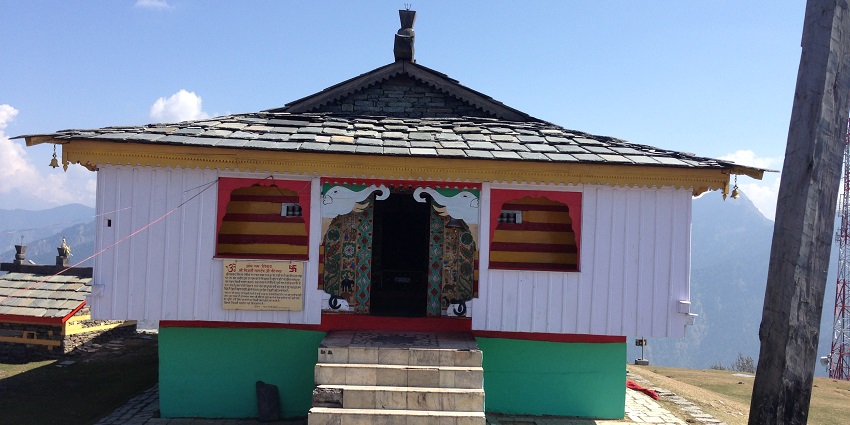
Photo: Akshat Sharma/ Wikimedia Commons
Perched atop a hill in the Kullu Valley, the Bijli Mahadev Temple offers panoramic views of the surrounding mountains. This ancient Shiva temple is famous for its 60-foot staff that supposedly attracts divine blessings in the form of lightning. According to local legend, the Shiva lingam in the temple shatters when struck by lightning and is miraculously restored by the temple priest using butter and sattu. The trek to the temple adds an adventurous element to the pilgrimage, rewarding visitors with stunning vistas and a unique spiritual experience.
Major Attractions: Unique lightning phenomenon and panoramic views
Best Time To Visit: April to June and September to October
Ideal Trip Duration: 3 – 4 hours (including trek)
Nearest Airport: Kullu-Manali Airport
Nearest Railway Station: Joginder Nagar Railway Station
5. Chamunda Devi Temple
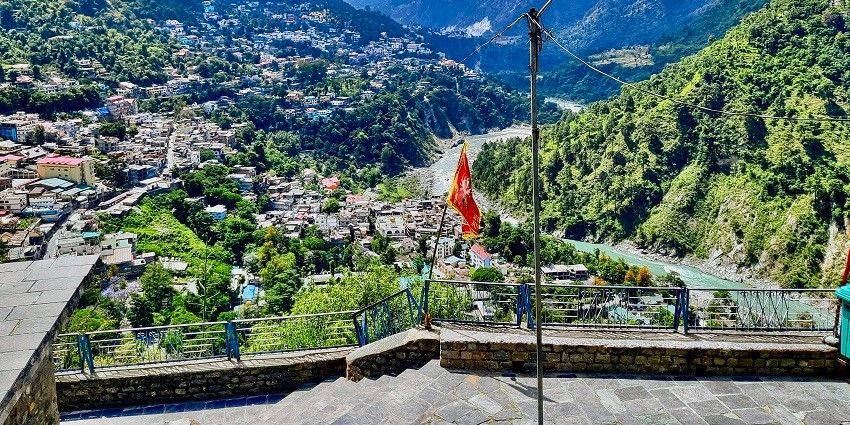
Photo: Ms Sarah Welch / Wikimedia Commons
The Chamunda Devi Temple in Kangra, while primarily dedicated to Goddess Chamunda, also houses a Shiva lingam, making it significant for Shiva devotees. Situated on the banks of the Ban Ganga River, it’s believed to be one of the 51 Shakti Peethas. The temple’s architecture features intricate carvings and a blend of North Indian and local styles. Its spiritual significance attracts devotees year-round, especially during Navratri. The temple’s picturesque setting and the confluence of Shaivite and Shakti traditions make it a spiritually enriching destination in Himachal Pradesh.
Major Attractions: Ancient Shakti Peetha with Shiva lingam
Best Time To Visit: March to June and September to November
Ideal Trip Duration: 2 – 3 hours
Nearest Airport: Kangra Airport
Nearest Railway Station: Pathankot Railway Station
Suggested Read: Discover The Spiritual Charm Of Manali Temples In Himachal Pradesh
6. Triloknath Temple
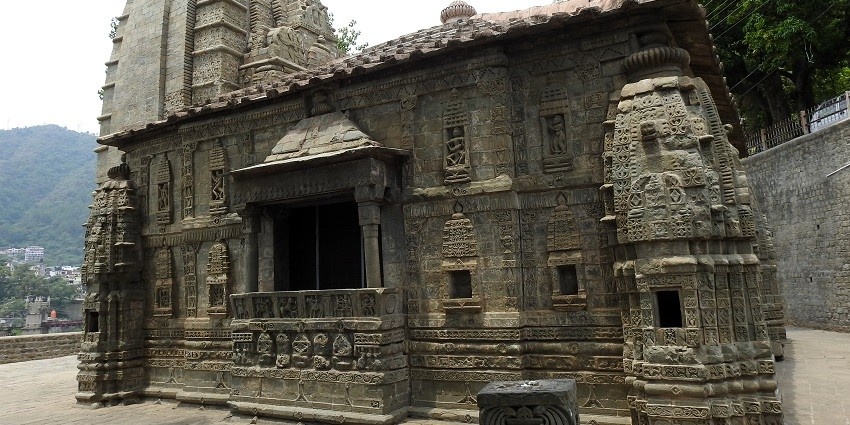
Photo: Harvinder Chandigarh / Wikimedia Commons
The Triloknath Temple in Lahaul and Spiti is a unique shrine holding significance for both Hindus and Buddhists. Hindus revere the deity as Triloknath (a form of Shiva), while Buddhists worship it as Arya Avalokiteshvara. The temple’s architecture reflects this dual significance, with elements of both Hindu and Buddhist styles. The white marble statue of the deity is a major attraction. Located in a remote, scenic area, the temple offers a peaceful atmosphere for spiritual contemplation and serves as a symbol of religious harmony in the region.
Major Attractions: Syncretic religious significance and unique marble statue
Best Time To Visit: June to September
Ideal Trip Duration: 1 – 2 hours
Nearest Airport: Kullu-Manali Airport
Nearest Railway Station: Joginder Nagar Railway Station
7. Manikaran Sahib Gurudwara
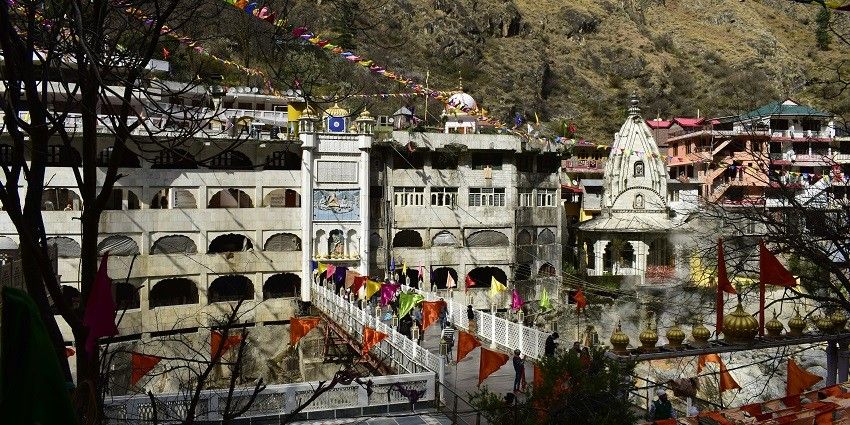
While primarily a Sikh gurudwara, Manikaran is also significant for Hindu pilgrims due to its association with Lord Shiva. According to Hindu mythology, Shiva and Parvati once spent 1,100 years here. The complex includes a small Shiva temple alongside the gurudwara. This unique blend of Sikh and Hindu traditions makes Manikaran a symbol of religious harmony. The hot springs and the picturesque Parvati Valley setting add to the site’s appeal, attracting both pilgrims and tourists.
Major Attractions: Hot springs and multi-religious significance
Best Time To Visit: April to October
Ideal Trip Duration: 2 – 3 hours
Nearest Airport: Kullu-Manali Airport
Nearest Railway Station: Joginder Nagar Railway Station
Suggested Read: Top Shiva Temples In Manali For Amazing Spiritual Retreat
A pilgrimage to the Shiv temples in Himachal Pradesh is not just a religious journey but also an exploration of the state’s rich cultural heritage and natural beauty. Whether you’re seeking spiritual solace, interested in ancient architecture, or simply looking to explore the cultural tapestry of Himachal Pradesh, a tour of these Shiv temples promises a memorable experience. Plan a trip with TripXL to embark on a transformative journey.
Cover Photo: Sumit.Kumar.99 / Shutterstock


 WhatsApp
WhatsApp
 Twitter
Twitter

